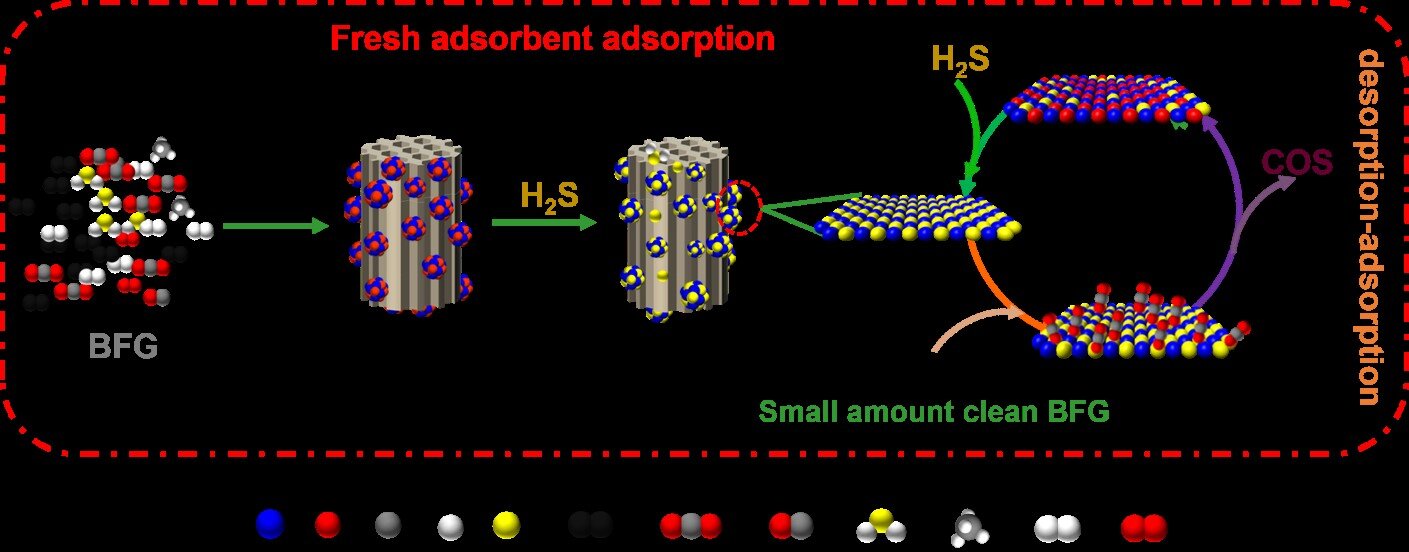by KeAi Communications Co.
Blast furnace gas (BFG) is an important by-product energy for the iron and steel industry and has been widely used for heating and electricity generation. However, the undesirable contaminants, such as COS, CS2, and H2S, in BFG generate harmful environmental emissions.
Due to the stringent ultra-low emission standards, the desulfurization of BFG is urgent for integrated steel plants. Compared with other desulfurization materials, zeolite-based adsorbents represent a viable option with low costs and long service life. However, the sulfur capacity of zeolite is relatively low and needs to improve.
Impregnation of transition metal oxides onto zeolite is a common strategy to prepare H2S adsorbent. However, this method usually results in the agglomeration of metal particles during calcination, forming relatively large metal particles. The large metal particle may increase the gas diffusion resistance in adsorbent and inhibit the desulfurization performance. Therefore, minimizing the metal particles on zeolite with a high loading is the key to the preparation of an adsorbent with high sulfur capacity.
To this end, a team of researchers from the Institute of Process Engineering, Chinese Academy of Sciences, has proposed an ammonia induction strategy. In the process of loading copper oxide onto 13X zeolite by the impregnation method, ammonia was introduced, and a Cu-based complex formed first and then adsorbed on zeolite, which was converted to CuO in the subsequent calcination process.
“The introduction of ammonia effectively inhibits the agglomeration and increases the dispersibility of CuO particles during calcination, prevents the plugging of zeolite pores, improves the diffusion of H2S during desulfurization, and thus increases the adsorption rate and sulfur capacity of H2S adsorbent,” said Erping Cao, lead author of the study published in Green Energy and Environment.
“The H2S adsorption capacity of NH3-CuO/13X adsorbent prepared by ammonia induction is more than twice that of CuO/13X adsorbent.”
Notably, similar results were obtained when the ammonia induction strategy was applied to the other kind of zeolite-based adsorbents.
“Based on the ammonia induction strategy, we have provided a general approach for the preparation of transition metal oxide/zeolite adsorbents with high sulfur capacity,” said corresponding author Yanbin Cui.
More information:
Erping Cao et al, Ammonia-induced CuO/13X for H2S removal from simulated blast furnace gas at low temperature, Green Energy & Environment (2024). DOI: 10.1016/j.gee.2024.02.002
Provided by
KeAi Communications Co.
Citation:
Ammonia induction strategy for preparation of transition metal oxides / zeolite H₂S adsorbent (2024, March 19)
retrieved 20 March 2024
from https://phys.org/news/2024-03-ammonia-induction-strategy-transition-metal.html
This document is subject to copyright. Apart from any fair dealing for the purpose of private study or research, no
part may be reproduced without the written permission. The content is provided for information purposes only.


